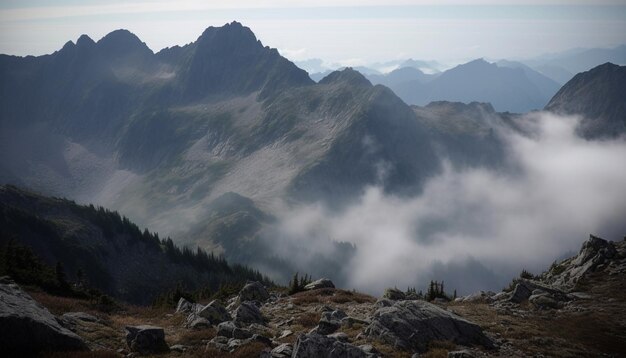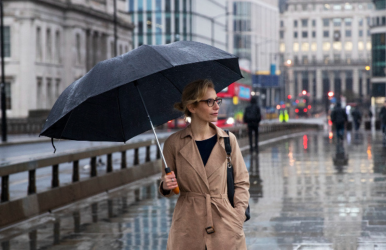Bangkok in the Rainy Season -What You Should Know
BY Sibashree Jul 21, 2025
Travel is all about enjoying the sunny weather with the light breeze blowing away your hair. But, unlike a sprinkle, torrential rain can literally ruin your entire trip. Making it one of the worst memories. So, it is kinda wise to check the rainy season prior to visiting that place. This way, you can avoid unnecessary hassles and know when to travel and what to do during this time. For instance, Bangkok’s rainy season spans from May through the beginning of November. And, when it rains there, it literally pours down buckets. So, be prepared to get stuck in some muddy puddles and flooded metropolis. Making it tenfold difficult to travel to your destinations or go for a city walk. But, if you are a rain lover, you should know about a few things before setting off to Bangkok. Here, I have brought you a complete guide on things to do in Bangkok’s rainy season. Stay tuned! Why Is Bangkok’s Rainy Season Considered Low Season? During the rainy season, the temperature drops to 26 degrees with humid weather. So, you will feel stuffy while traveling to tour spots. Moreover, the rain comes in bursts of torrential pouring. Turning the entire city into a flooded region. So, traveling or commuting becomes more difficult. And to top it off, the sky is mainly overcast with clouds all the time. Just killing the vibes. So, you won’t be able to enjoy the place. Naturally, this season earned the nickname of “Low Season” because of the mood-ruining weather and low tourist visits. What You Should Do In Bangkok’s Rainy Season? Here is a list of the things you need to do when you are stuck in Bangkok during the rainy season. 1. Wear Rubber Shoes The last thing you need is to walk around with nothing on your feet; wear strong rubber flip flops/sandals that are made for wet weather, and you will have no issues. A sturdy umbrella is always a wise thing to carry around in the rainy season, while a plastic anorak with a hood will save you if you get caught in a tropical downpour. Staying in one of the best hotels in Bangkok Sukhumvit puts you in the centre of the action, close to BTS stations. 2. Keep Your Digital Device Dry Buy one of those waterproof plastic bags for smartphones and store your device in there, along with paper money and your passport. If you get caught in a tropical storm, your stuff is very likely to get wet, and with a few dry bags, your stuff won’t get damaged. You can buy these online, and they come in packs of 10. Wear the bag around your neck and keep everything you need to keep dry inside. 3. Avoid Walking In Water Imagine being in the middle of a busy market, with stalls everywhere and electric cables in use; accidents can and do happen, so avoid walking in water whenever possible. Some foreigners take off their shoes and walk barefoot, which we don’t agree with. This is dangerous for many reasons. For instance, you could stand on broken glass, and a foot infection could follow. Thailand is the number one destination for wellness retreats. 4. Take Cover In A Shopping Mall If you are out and about and the heavens open, seek refuge in a nearby shopping mall, at least until the water has receded. A coffee shop would be the perfect solution, and they would welcome your business. One place you should not take shelter is under a tree, as lightning is common in tropical storms. Also, you should not be holding an umbrella when thunder and lightning are happening. 5. Afternoon Showers Rain typically falls in the late afternoon, and when it stops, the sun quickly dries everything out, and you would hardly know it had rained. It rarely drizzles in Thailand, the rain is heavy and the sun quickly returns. The exterior electrics in Thailand leave a lot to be desired and water and electricity do not mix. Use your common sense when it comes to being in water and avoid any situation you think might be dangerous. 6. Use The Canal Taxi Boats A great way to get around in the monsoon season, using the electric boats is both cheap and fast; search with Google to find out where the different canals actually go. Bangkok has many canals that wind through the city, and they are frequent and safe. Rain And Bangkok: How To Enjoy A Flooded Trip? Even though the weather is not perfect, sunny, and beautiful one which highlights the natural beauty of Thailand, it is a peaceful time to visit Bangkok. However, going there without taking the right precautions can make it a frustrating trip. So, make sure you pack up your rainy gear to fight against the torrential bouts. Also, given that most tourists avoid the place during Bangkok’s rainy season, you will find the tour spots less crowded. Letting you to actually enjoy a place in peace. Mainly, the greatest and busiest attraction, Grand Palace in Bangkok, becomes a spot with relatively fewer people. So, you can spend some time enjoying the view and architecture without enduring the rushing crowds. Additionally, you can book tickets for the annual arts festivals in the International Festival Auditorium. Then, enjoy exploring different art forms and cultural excellence without wetting your feet in the rainy puddles. Along with that, you can go around Chinatown to dig into some of the mouthwatering delicacies. From exciting street foods to different flavored mooncakes, grab a bite of every kind of food. So, turn the wet trip into a memorable one with the right activities and fun-filled experiences. Just take measures to avoid the rain and indulge in a peaceful Bangkok tour. Read More: Exploring Southern Utah’s Hidden Dive Sites Haneda Vs Narita: Which Tokyo Airport Should You Choose For Your Next Trip? Three Of The Best Must-See Attractions During Your Time On The Thai Island Of Phuket













